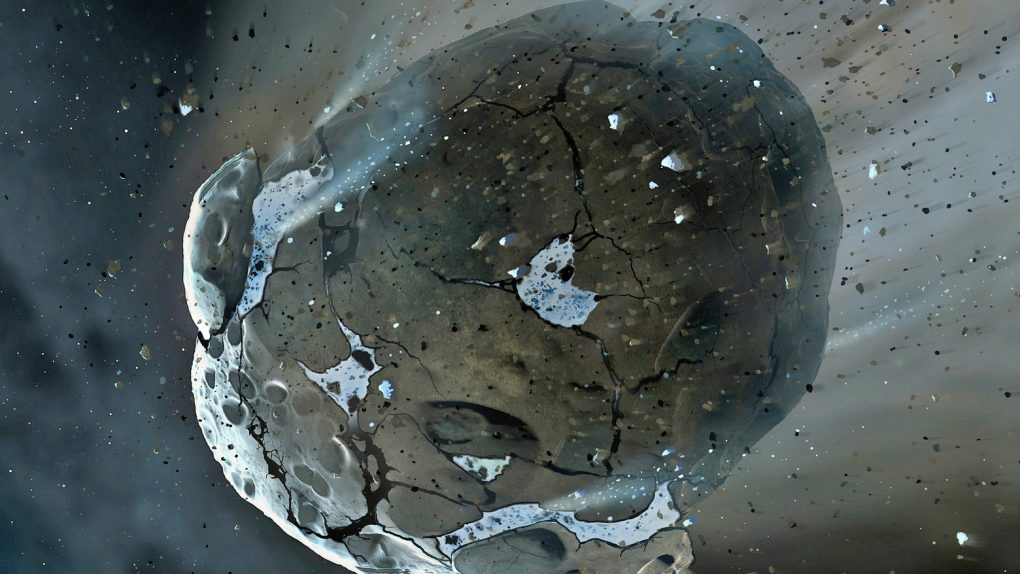A colossal three-mile-wide space rock named after a Greek god who almost destroyed the Earth is going to cruise past our planet on December 16th, but the asteroid’s next appearance will really be one for the books.
The rock, called 3200 Phaethon, was first discovered way back in 1983, and its most recent pass of Earth came in 2007. At that time, its closest approach put it at roughly 11.2 million miles from our planet, which is close in astronomical terms, but still a pretty safe distance. This time around, the peculiar asteroid will be significantly closer at 6.4 million miles. In 2093, well, that’s when things will start to get really interesting.
3200 Phaeton, which is classified as a “potentially hazardous asteroid” because of its size and proximity to Earth, is a pretty strange rock when compared to other known asteroids in our neck of the woods. It has a peculiar orbit around the Sun which brings it closer our star than any other named asteroid. This behavior is one of the reasons for its mythological naming.
According to legend, the Greek god of the Sun, Helios, had a son named Phaethon. Phaethon demanded proof from his father that he was actually the Sun god, and was granted permission to pilot his father’s solar chariot. Phaethon lost control of the powerful chariot and nearly destroyed Earth in a fiery blaze, but was struck by a bolt from Zeus before the cataclysm happened. The chariot was diverted and Phaethon was killed.
Back in reality, 3200 Phaethon doesn’t pose any great risk to humanity, at least as far as we know, but it will give astronomers something to really gawk at in 2093 when it passes at just 1.8 million miles of Earth. Because of its impressive size, it’s an object worth keeping a close eye on for the foreseeable future, but for now astronomers don’t believe it will usher in the apocalypse any time soon.








